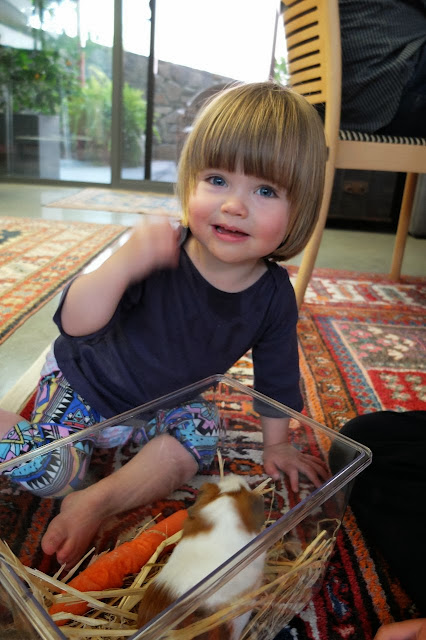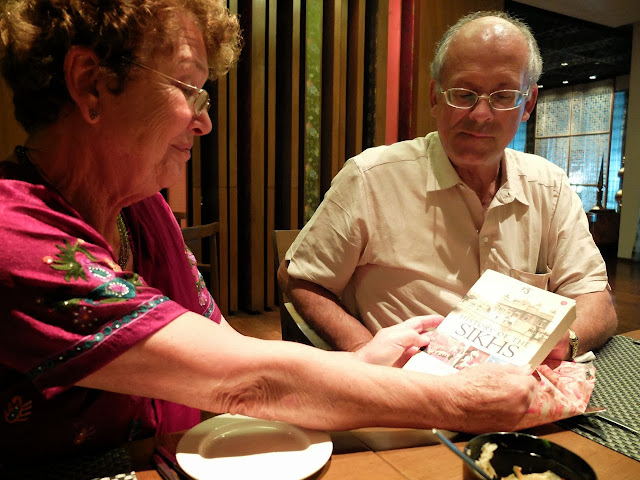On 13th April 1919 at the Jallian Wala
Bagh (park) in old Amritsar city a large gathering of Sikh people were fired on
without warning and at close range by a battalion of armed soldiers under the
orders of the British General Dyer. 1,650 rounds of bullets were fired into the
crowd of people that day, that included men, women and children. The resulting
massacre is one of the ugliest events in India’s more recent history, and one
for which the British government has not made an apology to this very day. The
massacre was, however, an important turning point in India’s march towards
independence.
Jallian Wala Bagh was a very sobering place to
visit on Sunday morning (13th October) in Amritsar. Even the topiary in the extensive park gardens reflected its most tragic past.
Hundreds of people tried to seek shelter by diving
into the well that was a feature of the park. Of course those who weren’t shot, died by drowning. A memorial
has been built over the original well.
Jallian Wala Bagh is quite close to the Golden
Temple in old Amritsar city so we only had a short walk this morning through its colourful, chaotic roads and laneways to find our way to the temple.
Anyone who comes to a Sikh temple must be offered
food and drink as the Sikhs believe people are not in the right state of mind
to pray if they are hungry of thirsty. At Amritsar’s Golden Temple, there are
up to 60,000 meals a day provided for pilgrims, all prepared by a small army of
energetic volunteers.
On this sunny Sunday morning the Golden Temple was
shimmering and the temple complex was buzzing with crowds of happy pilgrims and
some foreign (not many) visitors like us.
We were interested in seeing the huge kitchen and
food preparation areas. It’s a mind boggling concept – how to prepare 60,000
nutritious vegetarian meals a day and clean up afterwards – all with
volunteers: a dahl dish, two vegie curries, rice, chappati and a rice pudding
and milky sweet chai (tea) fed to all comers who need it.
Everything is done by hand, using the principle of
many hands make light work and volunteers come from every walk of life, rich
and poor and everything in between. This is such a sensible and practical
religion!
These volunteers were peeling the day's garlic requirements.
And the washing up is endless.
It was like Hell's Kitchen around the open fires cooking the day's dahl requirements in huge steel pots.
This volunteer asked to have his photo taken with me??
Afterwards we did a complete circumference of the
temple's enormous reflective pool area and observed the men washing themselves on the steps (women have their own enclosed washing area) as an act
of purification before prayer.
John Gill explained to us the horrific
consequences of “Operation Blue Star” in the early 1980s, resulting in the
destruction of the significant “parliament building” – the golden domed
building in the temple complex containing the holy book’s "bedroom"; the deaths of many Sikhs and then the consequential assassination of Indira Gandhi, the first female Prime Minister of
India. So much of Sikh history has been at the core of India’s history in the
last hundred years or so.
With all the wet slippery marble around I went for
a big slide at the Golden Temple, falling on my backside (luckily). No harm was
done and I received lots of concern from friendly onlookers.
Afterwards, our guide dropped us at Bharawan Ka Dhaba in the
crowded old city for lunch, a vegetarian restaurant serving delicious local
Amritsari dishes. The restaurant was crowded with locals – and no frills – but
we loved the thalis we shared: including dal, urad, paneer, channa, raita,
rice, naan, parantha, yellow dal, curd, sambar, papadam, aloo kulcha. We are
all over our Indian mid trip tummy sensitivities (no sickness, just spice and
heat overloads causing a little inconvenience) so we all attacked our food, in
amongst the locals, with gusto. I loved the parantha – flaky bread stuffed with
thin layers of potato and onion - yum!

We had a few hours to relax before setting off
again, this time to the India/Pakistan border (at the so called Wagah border –
the “safest” of the 52 border crossings between these two countries) only a 45
minute drive to the north of Amritsar, to witness the unique spectacle of the
simultaneous lowering of the flags at each of the border posts. We arrived
around 5.00pm – along with around 20,000 excited Indian people.
We had no idea what was happening on the Pakistan
side but over in India what we witnessed during the following hour’s ceremony
was a wonderful theatrical performance and a unique opportunity to
share with lovely local people their joy, their patriotism and a great sense of community fun and spirit.
The idea of the ceremony is to give each county a chance to "face off" against each other (theatrically speaking), every night at sunset, and show how much
bigger and better they are than the other. Despite the military presence and the tight
security the mood seems happy and good humoured. Our guide described it as like an
India Vs Pakistan cricket match at the border crossing each night.
When we squeezed into the already over crowded
viewing areas – lots of women, young and old were filling the street below,
dancing to Bollywood disco at maximum decibels. Naturally Jennie and I joined
in (no men allowed!) and were warmly embraced by the locals who seemed
delighted that we’d joined them. Unforgettable, and great fun for us - especially our "Jai-oh" finale, just the way every Bollywood musical ends!
Then everyone returned to their (non existent)
seats and the show began: a great hip hop warm up from the gorgeous Neera (from
Indian Army Fans), then the most wondrous performance of theatricality and
military precision from the guards in their gaudy fan topped helmet/turbans.
The male border security guards are chosen for their stature (they’re all
extremely tall) and the female guards are chosen for their diminutive elegance
(that’s how it looks anyway!) It’s all theatre after all!
The ceremony seemed to consist of the guards taking
turns to goose step up to the border opening and doing threatening gestures to
their opposing numbers on the Pakistan side and a series of explosive forehead
high, high kicks just to really send the message home. The crowds scream encouraging
chants and wave flags (just like at a cricket match). It was wonderful and
very thrilling to be a part of.
The two countries lower their flags at precisely the
same second as the sun slowly sets beneath the border gate on the Pakistan side.
After this extraordinary display ended Jennie and I were inundated with women
and children wanting their photo taken with us – lots of warmth and excitement.
One girl asked to take a picture of my hair which I realised later looked like
a sweaty frizzled mop after all that dancing in the humidity. I guess she
thought it looked sufficiently odd to warrant a picture.
It was a bit of a challenge to make our way out of
the Wagah border enclosure with that number of people involved, but not as bad
as at lots of events I’ve been to in Australia. We were back at the Hyatt by
after 7.30pm in time to enjoy a lovely meal, the friendly staff and each other's company as we reflected on our amazing day and our wonderful trip to “Incredible
India”. Thank you once again to Mr VP Singh from “Legends and Palaces”.
We’ll be traveling from Amritsar to Delhi on Monday
14th October and then out of Delhi in the early hours of Tuesday
morning – so we are coming to the end of this wonderful adventure. Thank you
for sharing it with us.





































































